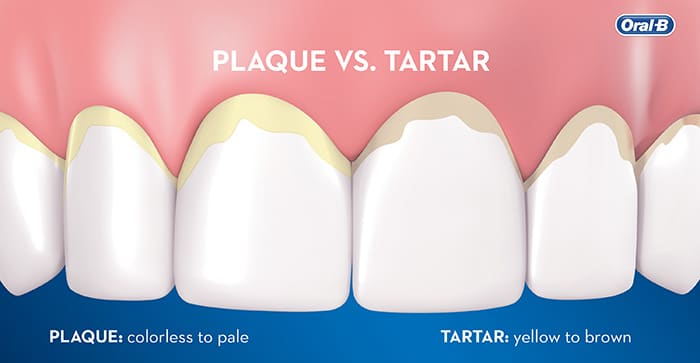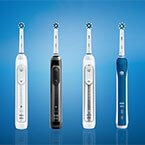TOOTH PLAQUE AND DENTAL TARTAR

- What is Tooth Plaque?
- What is Tartar?
- Prevent Tartar and Plaque Buildup on Teeth
- Tartar: The Hard Truth
Lots of people ask their dental professional if there’s a difference between plaque and tartar—and it’s a great question. Both plaque and tartar buildup are common dental problems. Significant plaque buildup can result in tooth decay and gum disease. Tartar is calcified plaque. Arming yourself with the facts can help you be smarter about how you care for your teeth.
What is Tooth Plaque?
Plaque is sticky, colorless film containing bacteria that builds up naturally on tooth surfaces, especially along the gum line within four to 12 hours after brushing.
When saliva, sugars in food, and fluids combine with plaque, it produces bacteria deposits that release acids, which collect where the teeth and gums meet.
Plaque contains bacteria, which produces acids that attack your tooth enamel and can damage your gums and create cavities. If not treated, the damage could become permanent. When plaque accumulates and is not removed, it can mineralize, trapping stains and turning into tartar. Plaque is the root cause of many oral health issues. Plaque bacteria can also contribute to gum disease, like gingivitis. Regular brushing and flossing are your most effective tools in the fight against plaque so we recommend using an electric toothbrush. If it’s not removed daily, plaque eventually accumulates and hardens into tartar.
What is Tartar?
Tartar is tough—it’s a hard, crusty deposit that can trap stains and leads to tooth discoloration. Tartar is formed when residual plaque on the surface of the tooth reacts with minerals in your saliva. Tartar is a yellow or brown colored deposit that forms when plaque mineralizes on your teeth. Susceptibility to tartar buildup varies greatly depending on the individual person. Generally, as you age, you become more prone to having tartar form on your teeth.

Prevent Tartar and Plaque Buildup on Teeth
Plaque buildup can lead to gingivitis and gum disease, so it is important to take steps for treatment and prevention.
- Regular Cleanings: See your dental professional every 6 months for a thorough cleaning.
- Use Fluoride Toothpastes: Brush with an anti-bacterial fluoride toothpaste like Crest Pro-Health. All Crest Pro-Health toothpastes are specifically formulated to fight bacteria that develops in your mouth.
- Floss Daily: Floss at least once a day to remove food particles and plaque between teeth. Pair regular floss with an irrigator like the Oral-B Water Flosser Advanced. Its unique Oxyjet Technology deep cleans and detoxifies* below the gumline to help eliminate plaque bacteria for healthier gums and cleaner teeth.
- Use an Electric Toothbrush: Use a high-quality electric toothbrush like the Oral-B iO Series and remember to replace your brush head every 3 months.
- Incorporate Mouthwash: Add a mouthwash to your routine, such as Crest Pro-Health Multi-Protection Rinse, to help protect against the buildup of plaque and prevent gingivitis.
- Eat Healthy: Eating well-balanced meals and brushing after snacks will help to reduce the formation of plaque.
*Helps reduce plaque bacteria and inflammatory components associated with gingivitis, when used as an adjunct to brushing, flossing and regular professional care.
Most Advanced Electric Toothbrush for Plaque Removal
662
Tartar: The Hard Truth
Only a dentist can remove tartar, but you can proactively prevent it with a good brushing regimen utilizing Oral-B® Electric Toothbrushes.
069055125946|069055125939|069055842010







